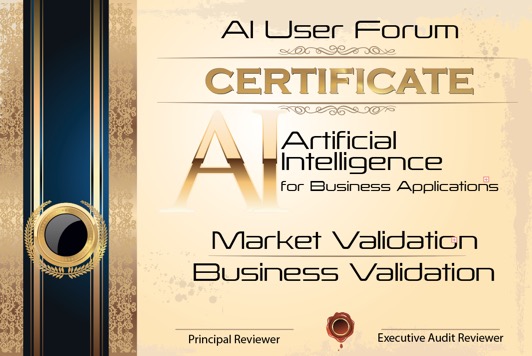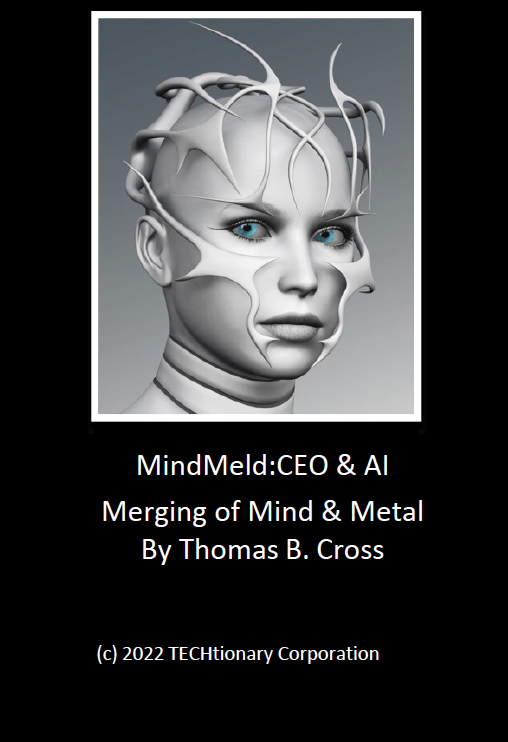Here’s 7 Things You Should Know Before You Make a Fatal Mistake in Your Business, Product or Career in AI – Highlights from an Executive Seminar.
Here’s 7 Reasons Why.
1) Ethics – issues and answers as the costs are real and your reputation is at risk – it isn’t just about cheating on tests but any company culture of deception, deceit and dishonesty.
2 ) Unrealistic AI results – AI generated results that don’t have any reality – the “spaghetti” forecasts are forecasts without real world actionable results – failure to understand “oblique” intelligence concepts (covered in course).
3 ) Venture and agent investors plus advisors don’t want to “lose face” over investments as their focus is on the management team, not tech as they really don’t understand or “too smart” to ask for help.
4 ) AI companies don’t want to hear anything bad and don’t want to tell their customers that sh— may likely happen and results don’t match the sales pitch.
5 ) Enterprise C-levels really don’t want to hear anything bad either as not having to explain to the CEO/CFO why the project failed and they get fired.
6) Security and cybersecurity – frameworks to protect against machine and man-made “monsters of the id” – cyber battle of SIGINT and HUMINT.
7 ) Regulation, governance and compliance is coming and along with industry if not international standards means AI needs to be real not just the “wild west” anymore if ever it should have been – issues and answer presented and that always elusive issue of privacy.
Before your AI product / project fails get your head out of the sand and get this “must-have” class Top-10 Reasons Why AI Fails and “Cures” and much more before you fail again.
Here is an article from CIO which support many of the concepts presented in the webinar.
This is a 30-minute executive webinar at $500 per person or $2000 for five people prepaid for 30-minute. Ask about 60-minute presentation with Q&A at a higher rate. One person thought the webinar to be “too expensive” to which I commented that they and their team was costing the company probably ten thousand a day probably going in the wrong direction and said if they really truly found no value I would return half of the fee. The world is a funny place wasting money and years and ending up with nothing but not wanting to spend even a little to “double check” where they are going – as you can replace the money but not the time and your competitors know that.
Scheduling is limited with few available times remaining in 2023. Payments via creditcard and no refunds.
Schedule email cross@gocross.com or 303-594-1694. No refunds.
Evaluations:
“Like Tom’s book MindMeld: Merging Mental and Mental called the – best business book on AI, this webinar saved us millions in going in the wrong direction.” G.B CEO
“AI is not about coding, programming or use cases, it is a about ‘thinking and intelligence’ because if you don’t do that then building AI solutions will fail and this webinar is a must-have for all AI companies.” D.P Venture Capitalist
Critical Analysis for Buyers & Builders of AI Solutions and Technology
By Thomas B. Cross @techtionary
Before you begin, expand or deliver a product, business or strategy, validate your efforts. Get a second opinion before you fail or risk a fortune. Why you ask. Because everybody and I mean everybody who is talking artificial intelligence (AI) is also looking for the dollars and real return on investment (ROI) that AI will either generate or save. Here’s some titillating news from the VentureBeat Summit, “Some IBM customers have gotten ROI within four months, especially in the area of marketing, noted IBM’s Cho Suh. Those companies managed to recoup the technology and labor spend within that time, she said, by using Watson to increase engagement from their users and do more cross-selling or up-selling.“
However, he certainly didn’t say how Watson is doing this nor that it would work for your business. If you want to dissect or crime scene investigation (CSI) the details, this may bring you some solace but not much. “Chen Peng, head of data science at UberEats, told the VB Summit audience that the company’s initial results from AI were immediate, and partly explained how it hit a run-rate of $6 billion in gross sales only four years after its founding. That’s because it was able to tap into its parent company Uber’s existing AI technology infrastructure. UberEats has a team of 40 data scientists and has been data-driven from the beginning.” UberEats is using AI to recommend restaurants and menu items, optimize deliveries. Each one of those business efforts is a complex task. “Analytics has played a critical role in driving the growth of the business,” he said. “We have been using ranking algorithms to tailor the content of the app — for example, menu items and restaurants. [They’ve led to a] 10 percent increase in session conversion rate, which can directly translate into the topline growth of the business.”
From my research for MindMeld in the book on business applications for artificial intelligence, I found that – even in well-known systems that were developed for medical applications or sales-ordering processes, quantifying man-movement tasks is a complex, if not impossible problem. Because management decision-making follows few rules, expert systems are generally used in situations where tedious and repetitious tasks produce human error. Such errors often happen with disastrous results in medical or sales-ordering applications. In other, complex applications, the process goes beyond simple commands and rule assignments. Activities where thousands or millions of dollars are at stake in managing certain tasks might justify the cost of developing an expert system. Most expert systems, in fact most software programs, are designed by relatively few people. Certainly, it can be argued that committee decision-making is less than perfect. Yet developed or well-considered decisions more often emerge from committees than from single experts. There are numerous examples of corporate policies and procedures that can be automated. Handling, executing, or designing functions might include sales-ordering procedures, travel voucher processing, purchase order management, management approvals, tech allocations, room size as a function of management position, and rules concerning the use of the executive dining room. The underlying key to designing successful expert systems is the ability to have and maintain sufficient rules and procedures that can then be used in a timely manner. The present state of increasingly complex management problems justifies the development of the expert system; the need to update or maintain these rules warrants the ongoing maintenance and use of such systems. Expert systems are most viable (1) within narrowly defined parameters, (2) have a long historical basis within the organization, (3) are least likely to change in the foreseeable future, and importantly (4) can easily be updated. The successful expert systems are those which are used constantly and thus checked for error, redundancy, and task-solving capability. Just as it is important for a system to capture the thoughts of a genius, it is equally important that it be able to change or delete the knowledge as it evolves or is proven wrong.
Validate your AI Business/Product/Strategy now – in order to make AI pay for itself, provide real ROI or sell by the thousands to customers looking for solutions you a looking for. We recommend at a minimum the following in a market/business validation:
– Build a long term view – figure out what you are really trying to do and also realize what AI is today will not be what it is tomorrow. From VB Summit, “AI is advancing quickly, “it’s very dynamic and changing, and the industry, and even the academics, underestimate the rate of change.”
– Focus on compelling business issue aka delivery logistics, complex customer order process, changing customer patterns and other complex issues that you don’t have an immediate solution or that your business is changing, and you want a new way to solve the problem.
– Explore both historical to new data – neither is important alone but both working together can find weaknesses and opportunities. History is certainly any guide for the future, however, at the very least you may find existing problems that will continue to exist unless something is done about them.
– Build for changing data analytics – more than just a better data “algorithm” model build an ever evolving data modeling process. From VB Summit, “You can make some pretty significant errors by assuming that the algorithm will learn itself and do all sorts of wonderful things. So, it’s become a reality check and growing hype around AI caused executives to put too much faith in the power of data science alone, but the pendulum has swung back to domain expertise.”
– Tracking and testing – simulate and then test “live” across customer pockets aka customer who live in warmer climates wear, eat, watch, do things differently than just a few hundred miles north. As one person from the VB Summit say, “We got all these great relevance models, and we were so excited about it. But when we tried to put it in production, it was terrible.”
– Build an AI business model – what is the goal and how does this AI system or approach fit into an immediate and long-term business model as well is this an internal business or external business to be sold to others.
More details can be found in both the MindMeld book and AI Executive Course or get help today to validate your product, strategy, due diligence or business plan email cross@gocross.com




